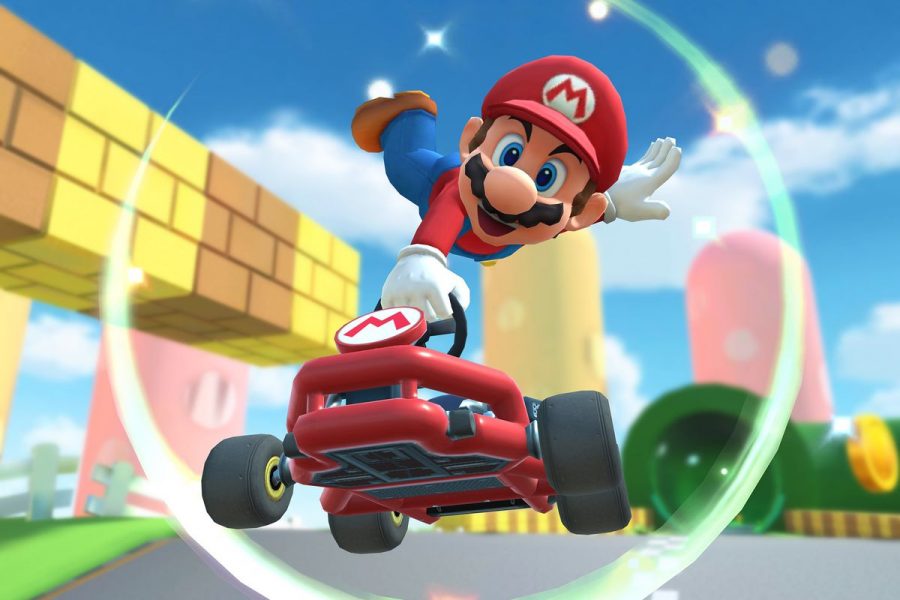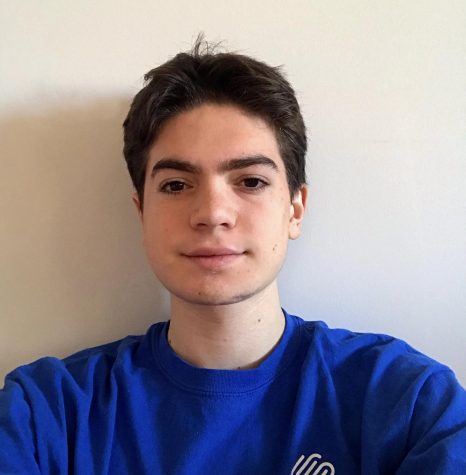The Renaissance of Mario Kart
October 21, 2019
Do you hear that in the distance? No, not the rattling of the air conditioner. Come on, listen closer. No, not the wind whistling, ever so gently, among the blades of grass. Listen closer. No, not the in-place vibrations of each and every one of the Earth’s atoms, trembling all at once like one great orchestra of what makes us man. That’s a little too close. You don’t hear it? The catchy tunes? The sound of green turtle shells upon impact? The eruption of celebration at the finish line? You know the sound: nostalgia.
Seemingly out of the blue, on September 25th, Mario Kart Tour appeared on the app stores of iOS and Android devices and, within days, skyrocketed in popularity. After hundreds of thousands of downloads and reviews worldwide within less than a week, it began to feel like everyone was playing, and, well, they were. People from all walks of life were playing, drifting, and, ultimately, enjoying life to the fullest extent on the virtual tracks. Emotions soared as they won race after race, collecting star after star. New drivers were won, new karts tested, and pre-race rituals undergone. Not even a month after release, students are exploding with confidence and strong opinions about the game.
“I’m extremely devoted as well as extremely privileged to have such great hand-eye coordination skills to excel at this game at the highest caliber,” said Edward Kim (’21).
“Bowser is the best character. Anybody who says otherwise is fake and a loser. Quote me on that,” said Will Chi (’20).
“I’ve been meaning to download it, but I always forget,” said Lauren Aslami (’20).
The extremely addicting game sets itself up as an obvious success among people of all ages who played religiously in the early to mid-2000s on the Wii console and DS before the switch to mobile phones. However, there is one crucial detail of the original game that the app lacks:
“Mario sucks because they don’t be rollin’ out that multi,” said Tomer Witelson (’21).
“Mario Kart Tour is fun but they wildin’ not to include multiplayer as a game mode,” said Thomas Lederer (’21).
“They really should have waited to release the game. The fun just wears off when you race against robots,” said Jake Friedman (‘21).
Clearly, when the game is enjoyable mostly due to the thrill of player-player competition, besides the cartoonishly scenic tracks, players are disheartened to find that they aren’t racing against real people, but instead bots or AI based on other players’ performances. The choice to add friends but the inability to race directly with those friends only added more salt to the wound. The absence of a local race mode leaves everyone with the same question: why play at all?
So, in short, Mario Kart Tour is, admittedly, extremely fun, but until Nintendo rolls out a player vs. player mode, it will simply never reach its full potential. Although fellow players remain separated for now, one day, they will join hands in a unity bound by a likely glitchy race mode and look up to the sky, knowing the truth of love and companionship.


















































































































































